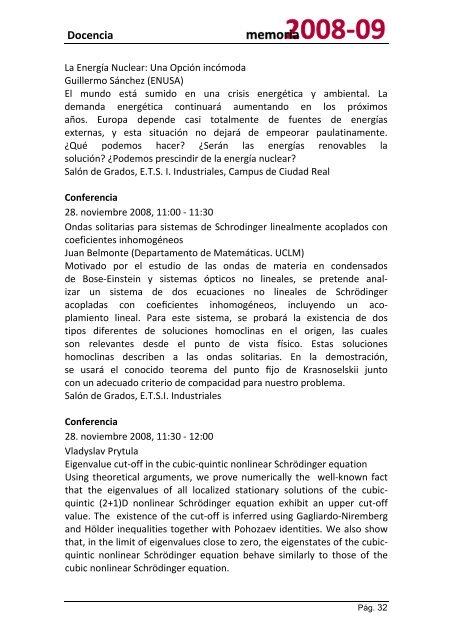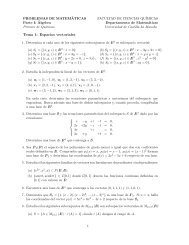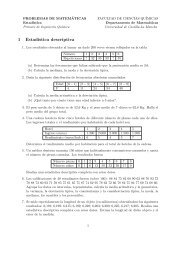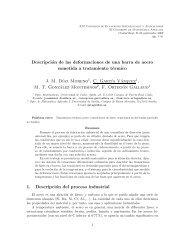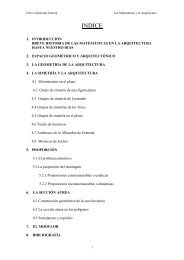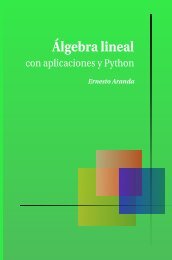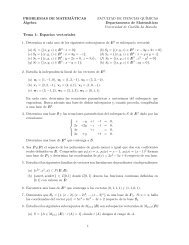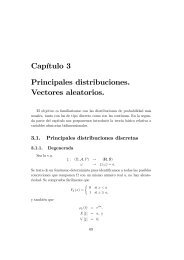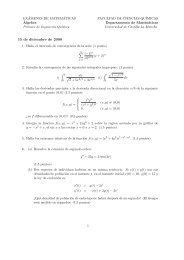Docencia - Departamento de Matemáticas - Universidad de Castilla ...
Docencia - Departamento de Matemáticas - Universidad de Castilla ...
Docencia - Departamento de Matemáticas - Universidad de Castilla ...
- No tags were found...
Create successful ePaper yourself
Turn your PDF publications into a flip-book with our unique Google optimized e-Paper software.
<strong>Docencia</strong>La Energía Nuclear: Una Opción incómodaGuillermo Sánchez (ENUSA)El mundo está sumido en una crisis energética y ambiental. La<strong>de</strong>manda energética continuará aumentando en los próximosaños. Europa <strong>de</strong>pen<strong>de</strong> casi totalmente <strong>de</strong> fuentes <strong>de</strong> energíasexternas, y esta situación no <strong>de</strong>jará <strong>de</strong> empeorar paulatinamente.¿Qué po<strong>de</strong>mos hacer? ¿Serán las energías renovables lasolución? ¿Po<strong>de</strong>mos prescindir <strong>de</strong> la energía nuclear?Salón <strong>de</strong> Grados, E.T.S. I. Industriales, Campus <strong>de</strong> Ciudad RealConferencia28. noviembre 2008, 11:00 ‐ 11:30Ondas solitarias para sistemas <strong>de</strong> Schrodinger linealmente acoplados concoeficientes inhomogéneosJuan Belmonte (<strong>Departamento</strong> <strong>de</strong> Matemáticas. UCLM)Motivado por el estudio <strong>de</strong> las ondas <strong>de</strong> materia en con<strong>de</strong>nsados<strong>de</strong> Bose‐Einstein y sistemas ópticos no lineales, se preten<strong>de</strong> analizarun sistema <strong>de</strong> dos ecuaciones no lineales <strong>de</strong> Schrödingeracopladas con coeficientes inhomogéneos, incluyendo un acoplamientolineal. Para este sistema, se probará la existencia <strong>de</strong> dostipos diferentes <strong>de</strong> soluciones homoclinas en el origen, las cualesson relevantes <strong>de</strong>s<strong>de</strong> el punto <strong>de</strong> vista físico. Estas solucioneshomoclinas <strong>de</strong>scriben a las ondas solitarias. En la <strong>de</strong>mostración,se usará el conocido teorema <strong>de</strong>l punto fijo <strong>de</strong> Krasnoselskii juntocon un a<strong>de</strong>cuado criterio <strong>de</strong> compacidad para nuestro problema.Salón <strong>de</strong> Grados, E.T.S.I. IndustrialesConferencia28. noviembre 2008, 11:30 ‐ 12:00Vladyslav PrytulaEigenvalue cut‐off in the cubic‐quintic nonlinear Schrödinger equationUsing theoretical arguments, we prove numerically the well‐known factthat the eigenvalues of all localized stationary solutions of the cubicquintic(2+1)D nonlinear Schrödinger equation exhibit an upper cut‐offvalue. The existence of the cut‐off is inferred using Gagliardo‐Nirembergand Höl<strong>de</strong>r inequalities together with Pohozaev i<strong>de</strong>ntities. We also showthat, in the limit of eigenvalues close to zero, the eigenstates of the cubicquinticnonlinear Schrödinger equation behave similarly to those of thecubic nonlinear Schrödinger equation.Pág. 32


